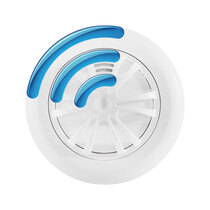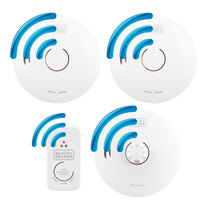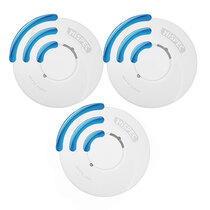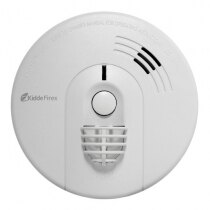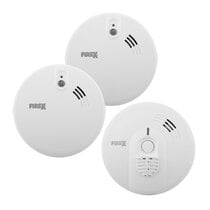-
Contact
Sales & Customer Service
0800 612 6537 support@safelincs.co.uk Live ChatDelivery Enquiries
0800 077 6149 - Resources
Fire & Safety Solutions
CALL OUR TEAM NOW 0800 612 6537
Lines open today 8am - 6pm
FREE Delivery
on marked products
Live Chat - Online
Instant help & Advice
Trade Discounts
and exclusive pricing
0% Credit Available
Open an account now
5 Star Customer Feedback
All Smoke Alarms
Smoke alarms serve as your first line of defence against fire dangers, alerting you to potential threats before they become life-threatening. As the UK's number one online fire safety company, Safelincs offers over 6,000 products, including a wide range of smoke alarms to suit various requirements and settings. Battery-operated smoke detectors provide flexible installation options without wiring requirements. Modern units feature: Mains powered smoke alarms connect directly to your home's electrical system, offering: Interlinked smoke alarms communicate with each other, creating a network throughout your home. Also known as optical smoke alarms, these units use light detection technology. Heat detectors respond to temperature rather than smoke particles. For enhanced protection, consider combined detection units: When selecting smoke alarms, several features can improve functionality: Safelincs provides solutions for all users: All smoke alarms sold by Safelincs meet British safety standards: Our selection includes market-leading manufacturers: Optical alarm products replace ageing ionisation alarms, which are being phased out industry-wide due to their radioactive sensors, which make them dangerous to manufacture, costly to transport and environmentally hazardous to dispose of. Optical smoke alarm technology has advanced sufficiently to be interchangeable with ionisation alarms while avoiding radioactive elements. Safelincs has stopped selling ionisation alarms and encourages all customers to purchase our optical alternatives instead. To maintain proper function: Selecting the right smoke alarms ensures your home remains protected against fire risks. With Safelincs as your fire safety partner, you gain access to expert guidance, quality products and ongoing support. Browse our complete range of smoke alarms to find the perfect solution for your safety needs.
Read more about smoke alarms...
Types of Smoke Alarms Available
Battery Smoke Alarms
Mains Smoke Alarms
Interlinked Smoke Alarms
Photoelectric Smoke Alarms
Heat Detectors
Combined Detection Systems
Advanced Features to Consider
Alarms for Specific Needs
British Standards Compliance
Trusted Brands at Safelincs
Ionisation Smoke Alarms
Smoke Detector Maintenance
Battery Heat Alarm - UltraFire UBH1
- FREE delivery
- Battery: AA alkaline batteries (included)
- Warranty: 10 year warranty
- Large test and hush button
- Suitable for BS 5839-6: 2019 Grade F2 installations
- Kitemarked to BS 5446-2: 2003
Battery Smoke Alarms and Heat Alarm Home Essentials Kit - UltraFire UFUB1KIT
- FREE delivery
- Battery: Alkaline batteries (included)
- Warranty: 10 year warranty
- Large test and hush button
- 2 x optical smoke alarms and 1 x heat alarm included
- Suitable for BS 5839-6: 2019 Grade F2 installations
- CE marked
BLACK+DECKER Combination Smoke & Heat Alarm - 10 Year Sealed Battery
- Product Life: 10 years
- Battery: Sealed lithium battery
- Warranty: 5 year manufacturer's warranty
- Combined optical smoke and heat detector
- Ideal for hallways, bedrooms, and living areas
- Suitable for ceiling installation
10 Year Longlife Battery Heat Alarm - UltraFire ULLH10
Ideal for rooms like garages, kitchens, and lofts where dust or fumes would cause false activations of smoke alarms, the UltraFire ULLH10 features a sealed 10 year battery and 10 year manufacturer's warranty.
- Battery: 10 year sealed lithium battery
- Warranty: 10 year manufacturer's warranty
- Heat sensor suitable for kitchens and garages
Radio-Interlinked Battery Powered Heat Alarm - UltraFire UBH1RF
- Battery: AA alkaline batteries (included)
- Warranty: 10 year warranty
- Large test and hush button
- Wireless interlink up to 50 compatible alarms
- Range of up to 35m in buildings
- Suitable for BS 5839-6: 2019 Grade F2 installations
- Certified to BS 5446-2: 2003
Radio-Interlinked Smoke Alarms and Heat Alarm Home Essentials Kit - UltraFire UFUB1RFKIT
- Battery powered with AA alkaline batteries
- Warranty: 10 year warranty
- Large test & hush button
- Wirelessly interlink up to 50 UltraFire UB1RF series alarms
- 2 x optical smoke alarms and 1 x heat alarm included
- Suitable for BS 5839-6: 2019 Grade F2 installations
BLACK+DECKER RF Interlink Heat Alarm - 10 Year Sealed Battery
- Battery: 10 year sealed lithium battery
- Warranty: 5 year manufacturer's warranty
- Interlink up to 20 devices from the same range
- Suitable for BS 5839-6: 2019 Grade F1 installations
- Also suitable for both the Welsh and Scottish 2022 legislation
BLACK+DECKER RF 10-Year Battery 2 Smoke & 1 Heat Kit
- Fire detection for most rooms in your home
- Battery: 10 year sealed lithium
- Warranty: 5 year manufacturer's warranty
- Radio-interlink up to 20 compatible from the same range
- Suitable for BS 5839-6: 2019 Grade F1 installations
BLACK+DECKER RF 10-Year Battery 3 Smoke & 1 Heat Kit
- Fire detection for your home
- Battery: 10 year sealed lithium
- Warranty: 5 year manufacturer's warranty
- Radio-interlink up to 20 compatible devices
- Suitable for BS 5839-6: 2019 Grade F1 installations
BLACK+DECKER RF 10-Year Battery 2 Smoke, 1 Heat, & CO Alarm Kit
- Better coverage for most rooms in your home
- Battery: 10 year sealed lithium
- Warranty: 5 year manufacturer's warranty
- Radio-interlink up to 20 compatible from the same range
- Suitable for BS 5839-6: 2019 Grade F1 installations
Radio-Interlinked Sealed Battery Powered Smoke & Heat Alarms - Hispec RF10-PRO Range
- Battery: 10 year sealed lithium battery
- Warranty: 5 year warranty
- Radio-interlink up to 20 Hispec RF10-PRO Alarms
- Suitable for BS 5839-6: 2019 Grade F1 installations
- Compatible with the Hispec Control Unit and Carbon Monoxide Alarm
- Alarms sold separately
- Compliant with Scottish 2022 and Northern Ireland Landlord 2024 legislation
Radio-Interlinked Sealed Battery 2 Smoke and 1 Heat Alarm Kit - Hispec RF10-PRO Range
- Battery: 10 year sealed lithium battery
- Warranty: 5 year warranty
- Radio-interlink up to 20 Hispec RF10-PRO Alarms
- Suitable for BS 5839-6: 2019 Grade F1 installations
- Compatible with the Hispec Control Unit and Carbon Monoxide Alarm
- Also suitable for the 2022 Scottish legislation
Radio-Interlinked Sealed Battery 3 Smoke Alarms and 1 Heat Alarm Kit - Hispec RF10-PRO Range
- Battery: 10 year sealed lithium battery
- Warranty: 5 year warranty
- Wirelessly interlink up to 20 Hispec RF10-PRO devices
- Suitable for BS 5839-6: 2019 Grade F1 installations
- Compatible with the Hispec Control Unit and Carbon Monoxide Alarm
- Also suitable for the 2022 Scottish legislation
Radio-Interlinked Sealed Battery 3 Smoke, 1 Heat, and 1 CO Alarm Kit - Hispec RF10-Pro Range
- Battery: 10 year sealed lithium battery
- Warranty: 5 year warranty
- Radio-interlink up to 20 Hispec RF10-Pro Alarms
- Suitable for BS 5839-6: 2019 Grade F1 installations
- Compatible with the Hispec Control Unit
- Also suitable for the 2022 Scottish legislation
10 Year Longlife Battery Radio-Interlinked Heat Alarm - FireAngel Pro Connected FP1720W2-R
- Battery: Built-in, lasts the lifetime of your alarm – GUARANTEED
- Warranty: 5 year warranty
- Can interlink with up to 50 Wi-Safe 2 compatible devices
- Large central button for test, hush and locate
- Range of up to 35m in buildings
- Suitable for BS 5839-6: 2019 Grade F1 installations
- Kitemarked to BS 5446-2: 2003
- Also suitable for the 2022 Scottish legislation
Mains Powered Heat Alarm with Alkaline Back-up Battery - FireAngel HW1-R
- Power: 230V mains powered with back-up battery
- Backup Battery: 9V alkaline battery
- Warranty: 5 year warranty
- Thermistor heat sensor measures the ambient temperature of the air
- Interlinks with up to 12 FireAngel W1 mains powered alarms
- Dedicated Test and Silence buttons
- Suitable for BS 5839-6: 2019 Grade D2
- Kitemarked to BS 5446-2: 2003
- Also suitable for both the Welsh and Scottish 2022 legislation
Mains Powered Heat Alarm with Back-Up Battery - Kidde Firex KF30
- Power: 230V mains powered with battery backup
- Backup: Optional alkaline or self-charging lithium backup battery versions
- Warranty: 6 year warranty
- Test and hush buttons
- Neat slimline design
- Interlinks with up to 24 units
- Suitable for BS 5839-6: 2019 Grade D1 or D2
- Kitemarked to BS 5446-2: 2003
- Also suitable for both the Welsh and Scottish 2022 legislation
Mains Powered 2 Smoke Alarms and 1 Heat Alarm Kit with Alkaline Back-up Battery - Kidde Firex KF Series
- Power: 230V mains powered with alkaline back-up battery
- Back-up Battery: 9V alkaline battery (included)
- Warranty: 6 year warranty
- Hardwire interlink with up to 24 devices
- Suitable for BS 5839-6: 2019 Grade D2 installations
- Also suitable for both the Welsh and Scottish 2022 legislation
Mains Powered 3 Smoke Alarms and 1 Heat Alarm Kit with Alkaline Back-up Battery - Kidde Firex KF Series
- Power: 230V mains powered with alkaline back-up battery
- Back-up Battery: 9V alkaline battery (included)
- Warranty: 6 year warranty
- Hardwire interlink with up to 24 devices
- Suitable for BS 5839-6: 2019 Grade D2 installations
- Also suitable for both the Welsh and Scottish 2022 legislation
Mains Powered 2 Smoke Alarms and 1 Heat Alarm Kit with Self-Charging 10 Year Back-up Battery - Kidde Firex KF-R Series
- Power: 230V mains powered with self-charging lithium back-up battery
- Back-up Battery: Self-charging 10 year back-up battery
- Warranty: 6 year warranty
- Hardwire interlink up to 24 compatible devices
- Suitable for BS 5839-6: 2019 Grade D1 installations
- Compliant with Scottish 2022, Welsh Landlord 2022, and Northern Ireland Landlord 2024 legislation
Page 1 (20 of 45 Products)
Mains Powered Smoke Alarms
Mains powered smoke alarms are powered by the electrical circuit of a building and are mainly used in residential new builds, rented accommodation and smaller commercial applications. Mains powered smoke alarms offer long-term reliability and are hardwired into your property’s electrical system. These smoke alarms are ideal for permanent installations in homes and in businesses, where specified in a fire risk assessment require a Grade D system and where there is a continuous power supply available. All of our hard-wired alarms also come with backup batteries (alkaline or lithium) to ensure protection during power outages. Browse our range of mains-powered smoke alarms for trusted solutions that meet safety regulations and provide dependable, 24/7 fire detection.
Radio-interlinked Smoke Alarms
Radio-interlinked smoke detectors have integrated radio frequency (RF) senders and receivers. If one smoke alarm detects a fire, it passes this information to all other alarms within the same group of alarms to raise the alarm in the entire building. This makes radio-interlinked smoke alarms a top choice for comprehensive fire safety across multiple rooms or levels of a property. Some of the RF smoke alarms have sealed long-life batteries as the only power supply, making them an alternative to mains powered smoke detectors. You can guarantee compatibility between alarms by purchasing a bundle from Safelincs. Some of our bundles include heat alarms to give you comprehensive cover all over your building.
Ionisation Smoke Detectors
Ionisation Smoke Alarms detect changes in the electrical charge of particles in the air within their sensor chamber. They were particularly well suited for 'invisible' or fast-flaming fires, such as paper or dry wood fires, which can give off very little smoke despite having an active flame. They were sadly also very sensitive to burnt toast, which is why they should not be installed near kitchens. Historically, ionisation smoke detectors have been recommended for landings and office spaces, but the technology behind optical smoke alarms advanced to the point that they are interchangeable.
Ionisation smoke alarms are being phased out across the entire fire safety industry, from standalone domestic alarms to detectors in the largest commercial panel systems. This is because they use radioactive material in the sensor to detect the presence of smoke particles in the air, making them dangerous to manufacture, awkward and costly to transport, and an environmental hazard if disposed of incorrectly.
Safelincs has stopped selling ionisation smoke alarms, and we would encourage all of our customers to purchase optical smoke alarms instead. Optical smoke alarms are not potentially hazardous like ionisation technology, due to not using radioactive elements.
Heat Alarms
Heat alarms, as the name suggests, measure temperature rather than detect smoke. They are designed to detect rapid temperature rises, which make them ideal for kitchens, garages, and areas where smoke alarms might trigger false alarms. It is important to know that heat alarms only cover small areas in a kitchen or garage so might require several heat detectors for full cover.
Optical Smoke Detectors
Optical smoke detectors, also known as photoelectric smoke alarms, are highly effective at detecting slow-burning, smouldering fires. They are especially useful in living rooms, bedrooms, and hallways where fires may start gradually, and create a huge amount of smoke due to soft furnishings such as furniture and curtains. These alarms respond to larger smoke particles and are less prone to false alarms from cooking fumes (not in kitchens, though). Safelincs recommend optical smoke alarms for hallways, dining rooms, living rooms, bedrooms.
Compare (0)
Reset
























